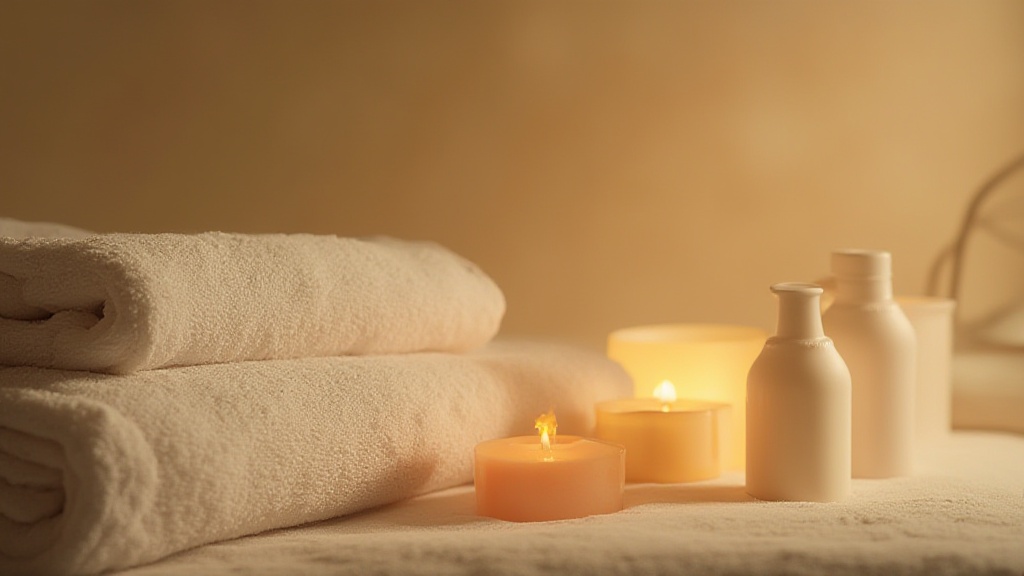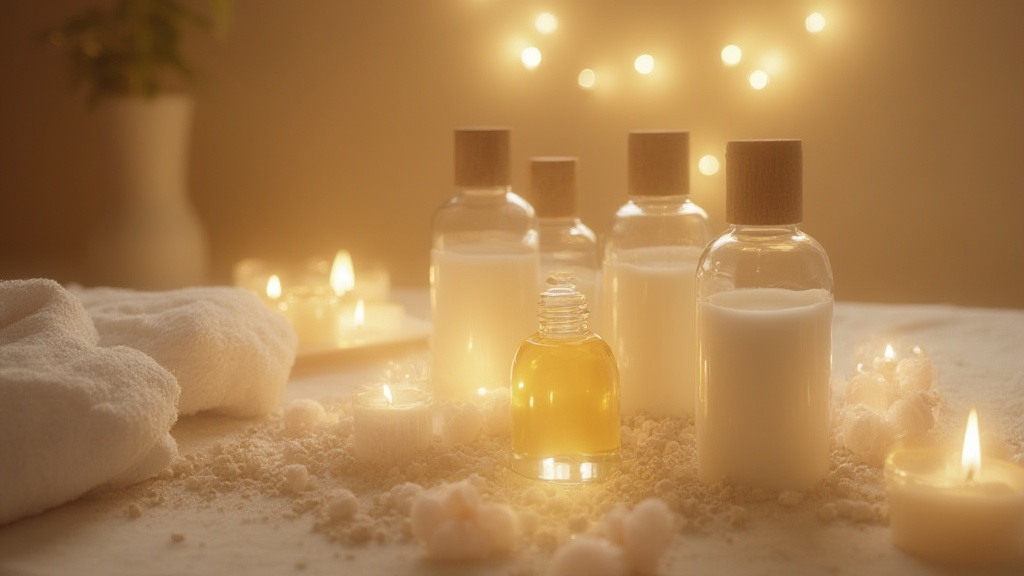
Unlock the tranquility of back massage with these essential tips designed for beginners. Engaging in back massage not only promotes relaxation but also effectively relieves muscle tension.
To start, create a comfortable environment where both you and your partner feel at ease.
Utilize natural oils, such as coconut oil or almond oil, to enhance the experience by providing smooth, soothing strokes.
Don’t forget to communicate openly about pressure preferences and focus on targeted areas like the upper back and lower back. By practicing these techniques, you can enhance the overall wellbeing of anyone receiving your massage.
Massage Techniques for Beginners
Grasping foundational skills significantly improves personal wellness and the effectiveness of stress relief methods.
Basic massage techniques serve as the groundwork for more advanced practices, ensuring each session maximizes benefits and minimizes the risk of injury. Focus on employing gentle pressure through simple strokes, such as warmup strokes and kneading techniques, to foster confidence.
Simple Strokes to Build Confidence
Starting with simple strokes lays the foundation for effective massage.
Incorporating soothing strokes can create a relaxing ambiance, promoting both muscle relaxation and tension relief.
Begin with gentle pressure and gradually adjust as needed based on feedback during the session.
This approach enhances both comfort and user satisfaction, leading to a positive experience.
The Importance of Proper Posture
Maintaining proper posture during massage is essential for your comfort and effectiveness. Good body mechanics can help prevent fatigue and strain, thereby allowing for longer massage durations.
As skills develop, this focus on posture during massage becomes vital for ensuring a sustainable practice.
Communication in Massage
Integrating communication in massage can significantly enhance the experience. Open discussions about pressure and specific areas of focus, such as trigger points or tension points, allow for a tailored approach that meets individual needs.
Effective massage practices rely on such interactions, ultimately leading to improved relaxation and satisfaction.

How To Create A Comfortable Environment
Establishing a soothing atmosphere significantly contributes to effective massage therapy. The ambiance directly influences relaxation and overall well-being.
Soft lighting plays an important role; adjustable lights can minimize harsh glare, promoting a calming environment.
Ideally, a temperature range of 68°F to 72°F should be maintained, preventing distractions that may disrupt relaxation.
Incorporating calming scents like lavender or chamomile can enhance the experience. Consider using essential oil diffusers or scented candles to fill the space with these soothing aromas, creating a truly comfortable environment that encourages deep relaxation.
Lighting and Temperature
Lighting and temperature are both essential elements in creating a comfortable environment.
Soft, dimmable lights can significantly enhance relaxation techniques during the massage session. Similarly, maintaining an appropriate temperature is crucial; a too-cold or too-hot setting can lead to discomfort and distract from the experience.
Calming Scents
Using calming scents can elevate the overall ambiance, leading to increased muscle relaxation and emotional release.
Opt for natural oils that promote well-being, as well as relaxation practices suitable for a massage setting.
Scents like eucalyptus and chamomile not only provide therapeutic benefits but can also encourage a sense of calm.
Essential Oils For Effective Massage
Exploring natural remedies becomes essential for achieving holistic health benefits in massage therapy.
Specifically, essential oils like lavender are renowned for their ability to promote relaxation and stress relief during sessions. Peppermint oil serves as an invigorating option that can soothe muscle soreness effectively, making it suitable for various massage techniques and stress relief methods.
Benefits of Specific Oils
Choosing the right oils based on the desired outcome is key for maximizing therapeutic advantages.
Each essential oil offers unique benefits, such as:.
- Lavender: Promotes relaxation and enhances sleep quality.
- Peppermint: Provides muscle relief and invigorates the senses.
- Tea Tree: Offers soothing effects for skin irritations.
Blending Oils for Personalization
Blending essential oils can significantly enhance the experience. For instance, mixing eucalyptus with sweet orange not only provides respiratory ease but also imparts uplifting energy. These tailored blends can elevate the overall effectiveness of various massage techniques, creating a unique and personalized approach to touch therapy.
Creating a Comfortable Environment for Massage Therapy
- Studies show that soft lighting can lower heart rates and promote relaxation during therapeutic sessions.
- A comfortable room temperature between 68°F and 72°F is recommended to prevent discomfort and enhance relaxation.
- Calming scents, such as lavender and chamomile, have been found to reduce anxiety and improve overall well-being.
- Essential oils like peppermint and tea tree offer specific therapeutic benefits, enhancing the effectiveness of massage techniques.
Practicing Gentle Pressure Techniques
Implementing gentle pressure techniques plays a significant role in effective massage therapy. Sensitivity to client needs enhances the overall therapeutic experience, enabling therapists to cater to individual preferences effectively.
Adjusting pressure based on feedback during the session is vital, as every client’s body responds differently to touch therapy.
Practicing these techniques on various body types prepares therapists with the necessary skills to modify their approach.
Incorporating soothing strokes and mindful body mechanics can promote muscle relaxation and tension relief throughout the massage. Ultimately, mastering gentle pressure techniques fosters a comfortable environment, ensuring clients feel respected and cared for throughout their massage journey.
Understanding Client Sensitivity
Client sensitivity informs how therapists should apply pressure during sessions. Recognizing varying levels of comfort among clients requires constant adjustments and attentiveness to their feedback.
By adjusting pressure dynamically, therapists can provide a customized experience that addresses specific tension points, enhancing the overall effectiveness of the massage.
Practicing Increased Awareness
Practicing increased awareness of one’s own touch is essential for developing effective massage skills.
This awareness allows therapists to identify the appropriate pressure needed for muscle relaxation while promoting stress relief.
Engaging in sessions that focus on different body types enables therapists to understand how various clients respond to different techniques. Through this practice, therapists can refine their ability to deliver a nurturing touch that supports overall wellbeing.
Communication In Massage: Why It Matters
Establishing effective communication is paramount for building trust between therapists and clients.
A clear dialogue about preferences and boundaries prior to the session significantly enhances the overall experience. Open-ended questions allow clients to express their needs freely, ensuring that the massage aligns with their expectations.
Discussing relaxation techniques and specific targeted areas facilitates a tailored approach that meets the client’s unique needs.
Establishing Preferences and Boundaries
Establishing client preferences and boundaries helps create a safe massage environment.
By discussing these aspects openly, therapists can ensure that clients feel comfortable throughout the session.
This dialogue should include pain management strategies and any concerns clients might have, allowing for a more responsive approach to their individual needs.
Enhancing the Therapeutic Relationship
Nurturing touch and attentive listening significantly strengthen the therapeutic relationship. Engaging in an open exchange fosters trust and enhances the effectiveness of each session.
By prioritizing communication, therapists can create personalized experiences that lead to improved client wellbeing and satisfaction.
Gentle Pressure Techniques in Massage Therapy
- Clients report higher satisfaction levels when therapists adjust pressure based on feedback.
- Studies show that personalized touch techniques can lead to greater muscle relaxation and pain relief.
- Effective communication prior to sessions is linked to improved client trust and comfort during massages.
- Therapists who practice increased awareness of their touch can better cater to diverse client needs, enhancing overall therapeutic outcomes.
Exploring Stress Relief Methods In Massage
Massage therapy serves as an effective method for managing stress through various relaxation techniques. By integrating massage with practices such as meditation or yoga, individuals can significantly enhance their overall wellbeing.
Exploring different massage techniques allows one to discover options that align with individual needs and preferences.
Tailoring the approach leads to personalized stress relief, maximizing benefits derived from each session.
Keeping a record of experiences provides insights into which methods yield the most significant effects. Embracing a holistic approach to stress management, including massage, promotes comprehensive well-being.
- Experiment with various relaxation practices to amplify massage effectiveness.
- Engage in self-awareness to determine which techniques are most beneficial.
Warmup Strokes For Muscle Relaxation
Initiating a massage with appropriate warmup strokes is essential for effective muscle relaxation. These warmup strokes enhance blood circulation, preparing muscles for deeper manipulation while minimizing potential strain. Recommended techniques include effleurage and gentle kneading, which effectively release tension. Such strokes increase muscle elasticity and promote comfort, enhancing the overall massage experience. Incorporating these preliminary techniques ensures improved outcomes during the session. By concentrating on these preparatory strokes, practitioners can elevate the effectiveness of their massage therapy.
- Integrate specific warmup strokes at the start of your sessions.
- Regular practice of these techniques enhances muscle relaxation.
Massage Therapy and Stress Relief
- Studies show that massage therapy can lower cortisol levels, a hormone associated with stress.
- Regular massage sessions can improve sleep quality, further aiding in stress management.
- Massage has been found to increase serotonin and dopamine levels, promoting feelings of well-being.
- Integrating warmup strokes can enhance muscle relaxation, leading to more effective stress relief during massage.
Postmassage Care And Hydration Tips
Effective postmassage care enhances recovery, ensuring the long-term benefits of therapeutic practices. Hydration is essential for muscle recovery after a massage, as it assists in reducing muscle soreness and improving circulation.
A consistent intake of water helps to flush out toxins released during the massage process, promoting effective muscle relaxation.
Hydration Guidelines
To maintain optimal hydration, aim to drink at least 8 ounces of water immediately after your session.
Including fluids throughout the day supports overall wellness.
The following practices can enhance your hydration efforts:.
- Drink water consistently during the day.
- Consider incorporating natural beverages like herbal teas or coconut water.
- Avoid excessive caffeine, which can lead to dehydration.
Postmassage Aftercare Practices
Simple aftercare practices, such as gentle stretching and using soothing massage oils, can further enhance your recovery. Incorporating these strategies into your routine allows for:
- Gentle stretching focusing on targeted areas to relieve tension.
- Applying essential oils like almond oil or coconut oil for skin nourishment.
- Creating a comfortable environment to facilitate relaxation.
By implementing these hydration strategies and postmassage care tips, you establish a foundation for lasting wellness and optimal muscle function. Prioritizing self-care routines and proper body awareness can significantly improve physical wellness and aid in effective recovery.
Postmassage Care and Hydration
- Studies show that proper hydration can reduce muscle soreness by up to 30% after physical activities.
- Drinking water post-massage can improve circulation, enhancing nutrient delivery to muscles.
- Gentle stretching after a massage has been shown to increase flexibility and reduce tension by 20%.
- Using essential oils in post-massage care can enhance skin hydration and promote relaxation through aromatherapy.
